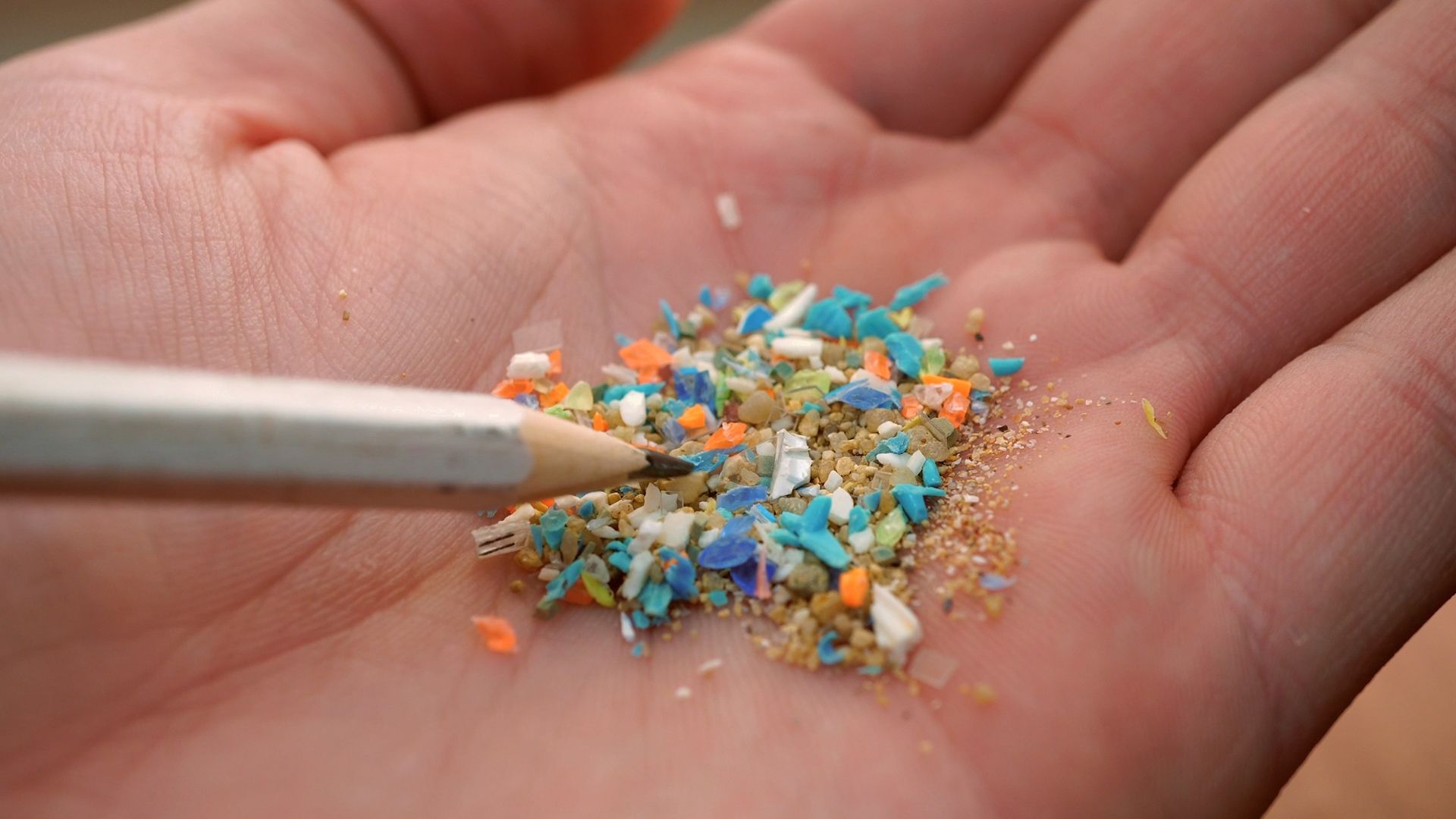What are microplastics?

What are microplastics?
What lies beneath? Plastic, probably.
Encyclopædia Britannica, Inc.
Transcript
In 2020 American Victor Vescovo set a world record for the deepest dive. His solo submersible trip nearly 7 miles below the sea led to the discovery of at least three new species—and plastic trash, even in the Mariana Trench, the deepest point on Earth.
The seafloor is now estimated to contain up to 11 million metric tons of plastic. That could be more than 100 times the amount of plastic trash that’s visible on the water’s surface.
Some of this plastic trash is large: fishing nets, garbage bags, shoes, grocery bags, food wrappers.
But much of it is much smaller.
Microplastics are tiny pieces of plastic polluting the environment. They are defined as less than 5mm (0.2 inch) in size, the equivalent of a pencil eraser, a stud earring, or a ladybug.
There are two types of microplastics: primary and secondary.
Primary microplastics consist of commercially produced tiny plastic bits: microbeads from cosmetics, microfibers from synthetic clothing, and nurdles, tiny plastic pellets created to make larger plastic items.
Plastic isn’t biodegradable, so once it’s in the environment, it’s there until someone cleans it up. It just gets smaller and smaller as it disintegrates—broken down by sunshine, wind, and waves.
That’s when primary microplastics turn into secondary, or nanoplastic, microplastics, even smaller particles. Nanoplastics are less than 1 micrometer in size.
Microplastics in the environment are being ingested by animals at alarming rates. These tiny, colorful bits look like tasty food. When eaten, they can cause digestive issues and internal injuries and introduce toxic chemicals into the food chain.
The first recorded animal death from ingesting plastic was in 1966, when dead albatross chicks were found with plastic toys in their stomachs.
In addition to seafood, microplastics are now found in drinking water and many food products. They’re commonly found in human stool samples and our bloodstreams.
More research is needed to determine what kind of effects ingesting microplastics will have on human health, but so far it’s obvious we need to turn the tide on plastic pollution.









